We round up our picks for the most comfortable headphones that will make you feel like your ears are in the clouds.
| Name | Type | Connectivity | Weight (g) | Price |
|---|---|---|---|---|
| Bose QuietComfort35 II Best Overall | Closed-back | Wireless | 233 | BUY |
| Sennheiser HD 599 Strong Runner-Up | Open-back | Wired | 272 | BUY |
| Beyerdynamic DT 990 Pro Best Budget | Open-back | Wired | 364 | BUY |
| Meze 99 Classics Best Lightweight | Closed-back | Wired | 260 | BUY |
| Philips SHP9600 Best for People with Big Heads | Open-back | Wired | 330 | BUY |
| AKG K712 PRO Best for People with Big Ears | Open-back | Wired | 294.8 | BUY |
How to Choose the Most Comfortable Headphones
Comfort is a very subjective matter. What people may find comforting can be disturbing for others. However, everyone can agree that nobody in this world wants to be uncomfortable for no reason — even with the headphones they wear every day.
It’s so easy to tell people to get comfortable headphones but comfort in headphones is not as straightforward as you think. It’s not just about the size and the padding — there’s also the materials used, the clamping force, adjustability, and more.
Here are some more features to consider if you want to get comfortable headphones:
Do headphone types matter?
There are probably millions of headphones out there but they can be categorized into four types — on-ear, over-ear, closed-back, and open-back. Each of these types has their own advantages, with some being more comfortable than others.
Among all these, on-ear headphones are less likely to be comfortable. Although typically lighter because of their size, these headphones sit on top of your ears and tend to squeeze them. This can cause pain and ear fatigue.
The better choice for comfort are over-ear headphones. These headphones fully enclose your ears and avoid any pain-causing contact with the cartilages in the area.
Over-ear headphones can be open-back or closed back. Closed-back headphones are great at isolating music and locking the bass inside the ear cups. These headphones are comfortable enough for those who only spend 1-2 hours of listening time. Beyond that, moisture can build up and locked vibrations can cause ear fatigue.
If you want to stay comfortable for longer periods of time, open-back headphones are better for you. Because of their open and well-ventilated design, they’re less likely to cause ear fatigue and moisture build-up.
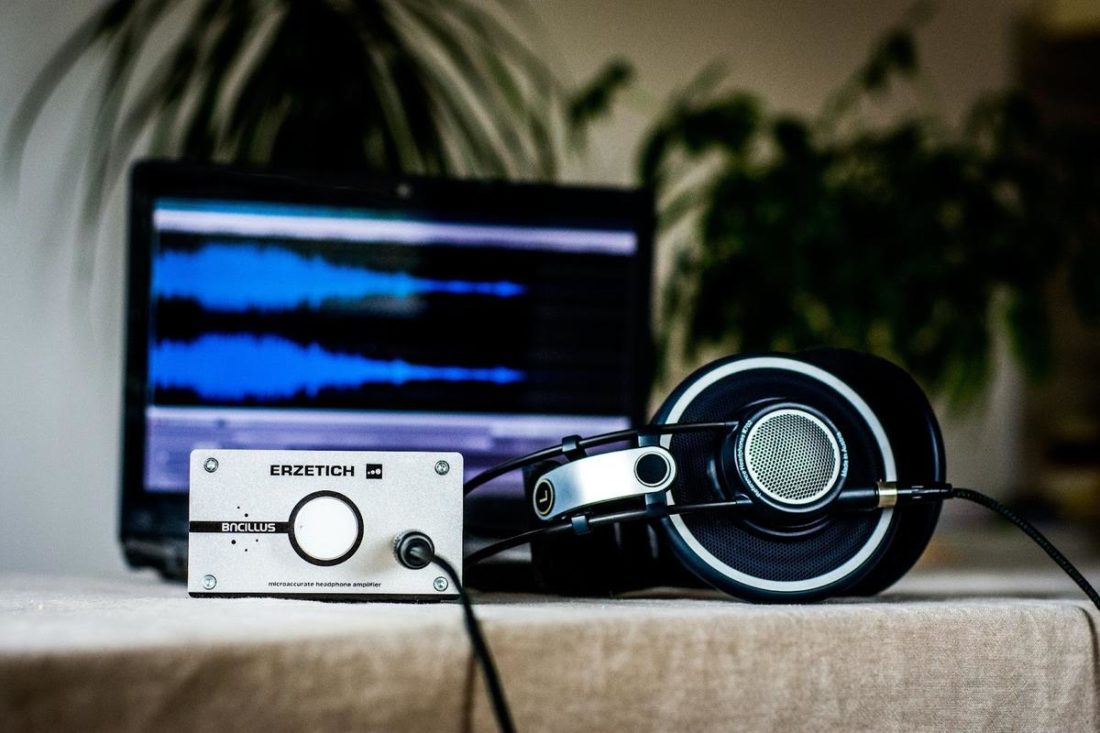
Padding & Materials
The paddings are responsible for many things such as breaking the force from the headphones and making sure that any hard parts do not bump your head. Headphones primarily have three paddings — one for each ear cup and one for the headband.
Conventionally comfortable paddings should feel thick and full while staying evenly cushioned and stable. They should also be breathable in order to prevent your ears from feeling too warm and moisture build-up that can feel unpleasantly slippery in the long run. And, the most crucial factor to get all these is the material used to make the paddings themselves.
Memory vs Polyurethane vs Latex
For the longest time, manufacturers have been using polyurethane and latex foam to line headphones. These two are both cheap and they get the job done.
Latex foam is steady — your ears won’t sink in as much inside the foam and the temperature would remain constant as well. On the other hand, polyurethane foam or poly-foam is the cheapest and most basic foam used. It’s soft and offers support, but it collapses quicker than its counterparts.
However, most high-end headphones today come with memory foam padding. This padding takes the best qualities of both latex and polyurethane into one.
Its strength lies in its ability to mold to your ears and retain the shape longer than regular polyurethane foam. The result is a denser feeling that surrounds your ears on all sides. Memory foam is also known for its breathability and ability to absorb heat for that cooling factor.
With all the factors considered, memory foam is the best choice for comfort. That’s also why people who are thinking of replacing their ear pads often lean to memory foam paddings.
Padding Coating
The material used to coat the foam is also crucial for comfort. This thin layer is the one that’s in actual contact with your skin so it directly affects ventilation and moisture.
You can choose from the common types like velour, genuine leather, or protein leather. Each one has its own strengths that you need to know in order to determine which one would be the best for you.
The leathers, both protein and genuine, are the most durable ones. These two are easy to clean and are great in keeping the sound and the bass inside the ear cups. However, genuine leather is made out of animal skin and can last longer than the cheaper and machine-made protein leather.
Velour is a lot softer compared to leather. This material can result in occasional sound leaks due to their porous structure and, being a fabric, they’re harder to clean as well. However, this is a type of plush felt fabric that offers more cushion and ventilation than the two other coating materials. So, if you want something that’s objectively comfortable, velour is your best bet.
Ear Cup Depth & Size
Did you know that studies have shown how ears could be better IDs than fingerprints? It may not look like it but, according to a study by Mark Nixon, ear shapes are actually unique per person.
With this in mind, one could argue that the idea of one-size-fits-all in headphones is not quite correct. Still, ironically, a lot of headphones do not have ear cup depth and size options, which are crucial for comfort.
The ear cup depth refers to how much space is inside the ear cups when you wear them. People with protruding ears, like Mahatma Gandhi for example, should have deeper headphones with thicker padding. If not, the inner parts of the ear cups would hit the users’ ears, causing pain or ear fatigue.

Meanwhile, size refers to the length of the ears from the top (helix) to the bottom (ear lobe). If someone’s ears are too big for the ear cups, they’ll experience pain caused by the headphones pressing onto the cartilages of the ears. But, if the ear cups are too big for the user, the headphones would be loose and could cause chafing or other friction burns.
Circular ear cups are great for those with big ears because that shape has more room on the side. On the other hand, those with smaller ears can opt for oval or D-shaped ear cups, which are more snug.
Weight & Clamping Force
The weight and the clamping force are two related concepts that are very important when it comes to comfort as well. While the weight is quite self-explanatory, the clamping force needs a little bit more explaining.
The clamping force pertains to how tight the headphones press onto your head.
Oftentimes, the heavier the headphones, the stronger the clamping is. This is because the weight would pull the headphones down so the clamp or grip exerted on the head has to be strong enough to keep the headphones in place.
However, this is not always the case. Headphones with the right balance between weight and clamping force should feel lighter and less tight since the pressure would be more evenly distributed.
Headphones with strong clamping force are more likely to cause ear fatigue and pain because they press on the ear cartilage called the pinna. The pinna can swell when bent and sustain permanent deformities as well.
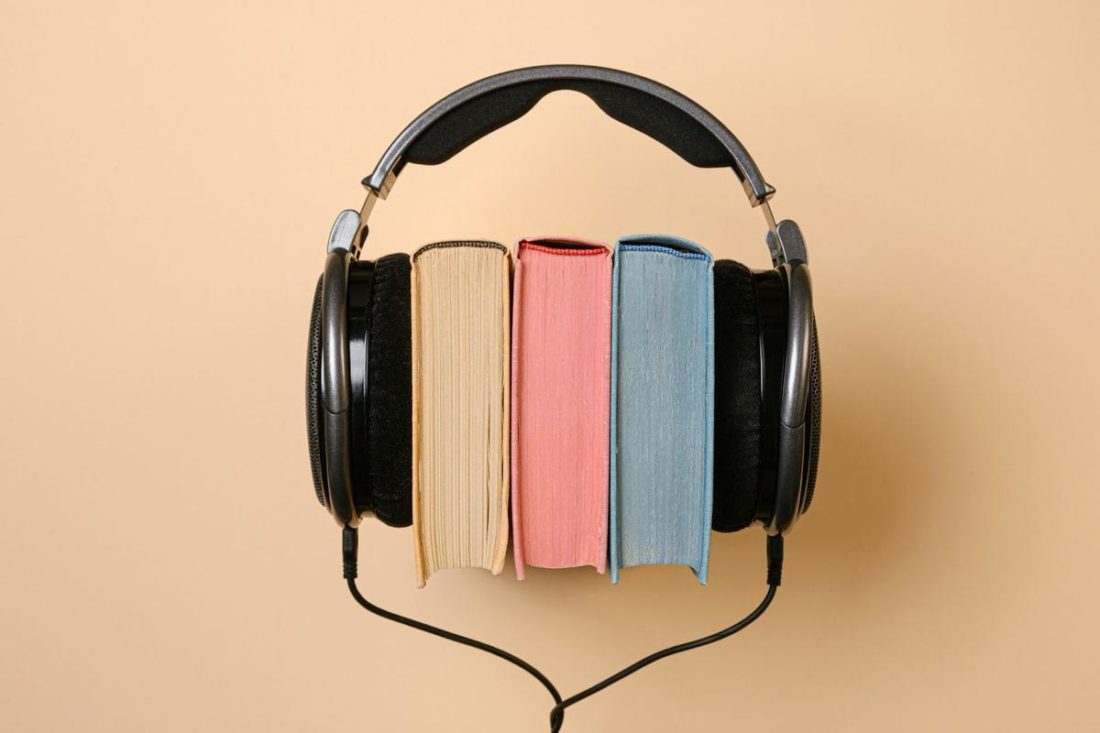
Ironically, choosing the weight and clamping force for your headphones is both subjective and objective.
Objectively speaking, you should not get heavy headphones because they can strain your neck when used for long hours and the equivalent clamping force can also cause pain.
However, tolerance for weight and pain differs from one person to another making this a subjective decision still. Not to mention, every person has different head shapes and sizes. So what can be tight for some may feel too loose for others.
Adjustability
More often than not, headphones in the market are made to scale the average head size. But, just like in the case of ear shapes, people have different head dimensions. So what one person may find comfortable out of the box can be uncomfortable to others.
This is where adjustability comes in handy.
If you want headphones that you can refine to your liking, you should look for something with rotatable ear cups, adjustable headbands, and replaceable parts.
- Ear cup rotation: This feature allows users to adjust the ear cups of the headphones to their facial contours. Today, most ear cups can be tilted by around 30-45 degrees diagonally. However, some headphones allow users to rotate the ear cups in or out as well. The more directions the ear cups can rotate to, the better.
- Headband adjustment: This adjustment extends the headband to match the distance between the top of the user’s head and their ears. Headphones often have adjustable sliding hinges that can be pulled in or out. Some even have numbers and locks inside the hinges for balanced adjustment.
- Replaceable parts: Replacing the parts of your headphones is perhaps the ultimate way to customize them. The most common replaceable piece in headphones is the padding, which you can change according to your preferred material. However, there are headphones with replaceable headbands as well.
Durability
Comfort makes the listening experience a lot more enjoyable, but you shouldn’t sacrifice durability just for that. After all, what good are the world’s most comfortable headphones if you won’t be able to use them for years, right?
Fortunately, headphones that are both comfortable and durable are not that hard to come by nowadays — you just need to know what to look for.
In the previous sections, we found out that comfort comes from padding, adjustability, weight, and more. For durability, you need to look at the materials, the IP Rating, and the warranty.
- Materials: This can be tricky especially if you’re considering durability and comfort. Solid and dense materials like different metals ensure durability but these are often heavy and bulky — which can affect comfort. Fortunately, lightweight but strong plastics such as PVC, PC, and ABS are widely available now so look for these.
- IP Rating: IP Ratings signify water and dust resistance of the headphones. The rating is composed of two numbers — the first number pertains to protection against dust or debris while the second number is for water resistance. The higher the numbers are, the more durable the headphones are.
- Warranty: Warranty may not directly contribute to the durability of the headphones, but they tell us something important. The length of the warranty signifies the trust of the manufacturers in their products. If the headphones have a lifetime warranty, the brand is confident their product would last that long before possibly needing repairs.
Budget
Headphones should not hurt your ears but they also shouldn’t hurt your pockets that much. Unfortunately, good comfortable headphones come with a price — but for good reason.
Among many things, you don’t want cheap materials used for the padding and their respective coating. Second, lightweight but durable materials such as carbon fiber are not as cheap as low-quality plastic housing. You’re also paying for other things like the design and waterproofing properties of the headphones.
At the end of the day, expect to get what you pay for. Although there are good low-budget headphones out there, you have to be ready to pay more if you want something with higher quality materials and better build quality.
6 Most Comfortable Headphones in 2023
Bose QuietComfort 35 II
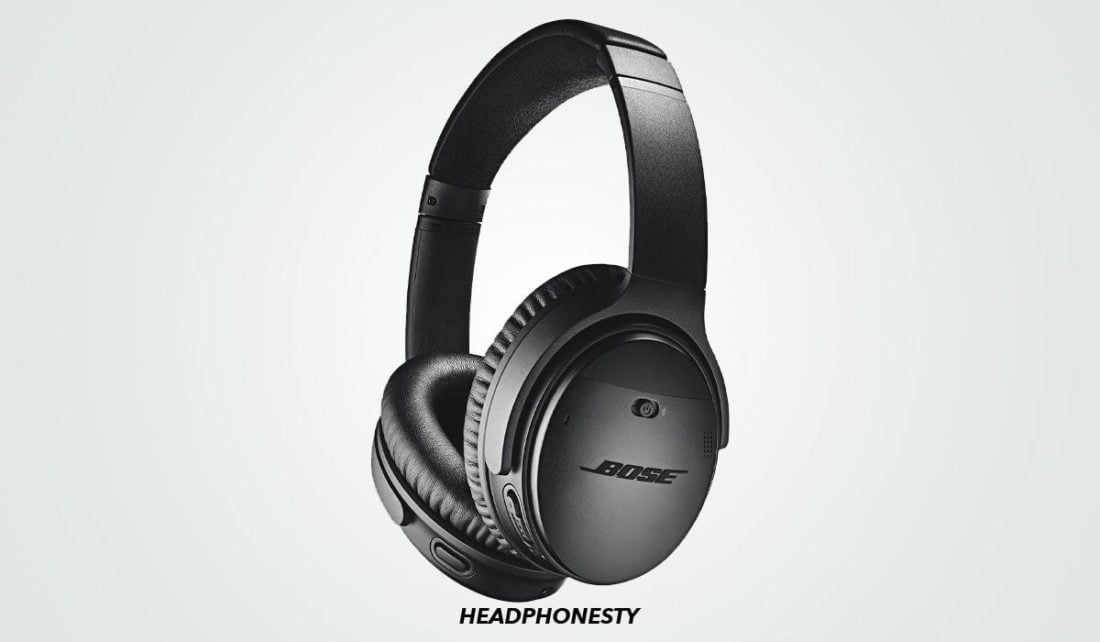
Key features
- Type: Closed-Back
- Connectivity: Wireless
- Padding: Synthetic Protein Leather
- Weight: 233g
- Adjustability: Headband height adjustment, and slightly rotatable ear cup
- Other Features: Alexa-enabled, Dual noise-cancelling microphone system, Bose AR, Active Noise Cancellation (ANC), IPX4, Multipoint Connection
This shouldn’t be surprising since comfort is literally in its name! The strength of the Bose QuietComfort 35 II lies in their premium high-quality materials combined to create what seems to be the standard of comfortability in the market.
QC35 II, despite being wireless closed-back headphones, are surprisingly breathable even when used for hours. The soft-cushion ear cups are wrapped in protein leather while the headband padding is made out of Alcantara cushion — the same type that is used by Louis Vuitton and Formula One cars.
These headphones are the lightest in this list at 233g. Despite that, Bose managed to create a durable piece by using impact-resistant materials, glass-filled nylon, and corrosion-resistant stainless steel. Their ear cups can also be rotated to face in or out.
Aside from these advanced hardware features, the QC35 II are also packed with great software. They feature ANC and multipoint connection. Plus, they are also Alexa-enabled and have an IPX4 rating. Bose-exclusive features such as Bose AR and the Bose Connect App are also available for use with these headphones.
Unfortunately, you may find it disappointing that they only support AAC and SBC codecs. That’s why occasional hiccups in connectivity have also been reported. But, if you’re in it for comfort, then these headphones are flawless.
Sennheiser HD 599
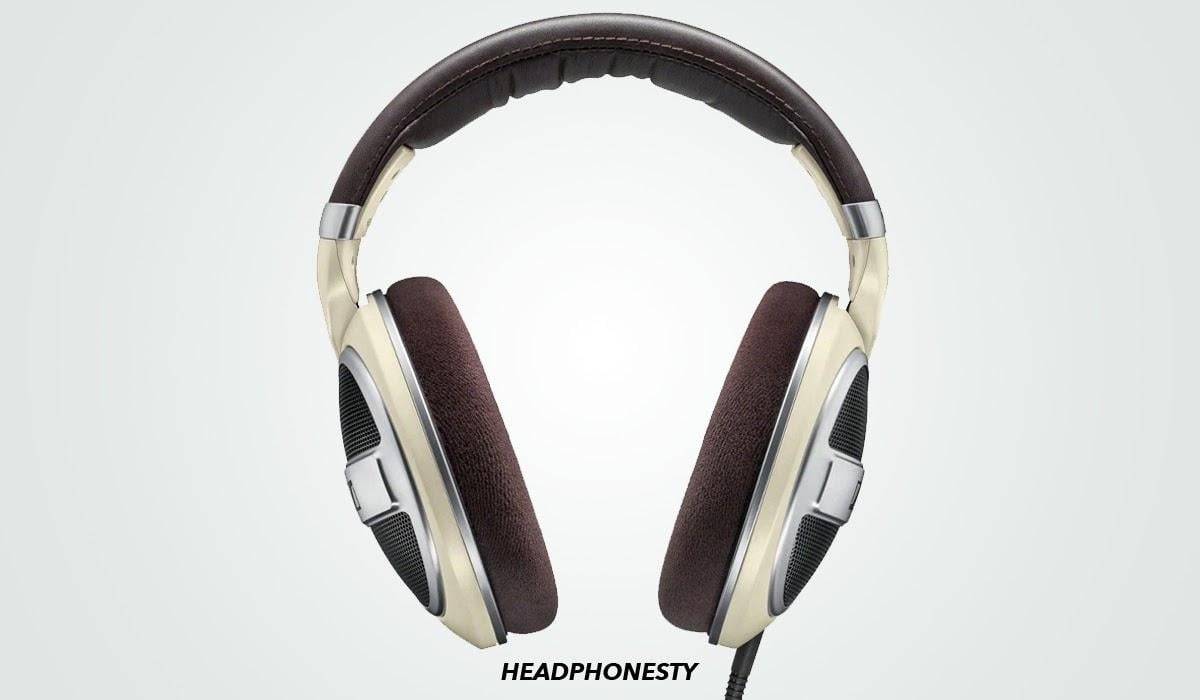
Key features
- Type: Open-back
- Connectivity: Wired (Detachable Cables)
- Padding: Velour
- Weight: 272g
- Adjustability: Headband height adjustment, rotatable ear cup (diagonally and inward/outward)
- Other Features: Sennheiser Ergonomic Acoustic Refinement (E.A.R.)
Next on the list is the Sennheiser HD 599. Coming from the HD 5 series of one of the most iconic audio brands, the 599 are high-fidelity headphones great for long hours of sound editing and mixing inside the studio.
The 599 look and feel comfortable with their open-back design and velour-wrapped paddings. These 272g headphones are breathable and, needless to say, made to stay comfortably dry even during hours of gruelling music production work. They can also be tweaked in most ways you can think of — from height adjustments to ear cup rotations and tilt.
The HD 599 are wired headphones. They come with a 3-meter detachable cable with a 6.3mm jack as well as a 1.2-meter cable with a 3.5mm jack. Sound-wise, the 599 have a good neutral sound and wide soundstage that bodes well especially for producers and artists. You really can’t expect anything less from a professional-level piece.
They also feature Sennheiser’s Ergonomic Acoustic Refinement (E.A.R.) which channels audio directly into the ears for a more accurate and satisfying listening experience.
Unfortunately, that’s about it for the features of the 599. While they are highly regarded as one of the most comfortable headphones in the market today, they lack the features that day-to-day headphones have. Particularly, they do not block outside noise well and they don’t have access to the Sennheiser Sound Control App that lets users customize the headphones to their liking.
Beyerdynamic DT 990 Pro
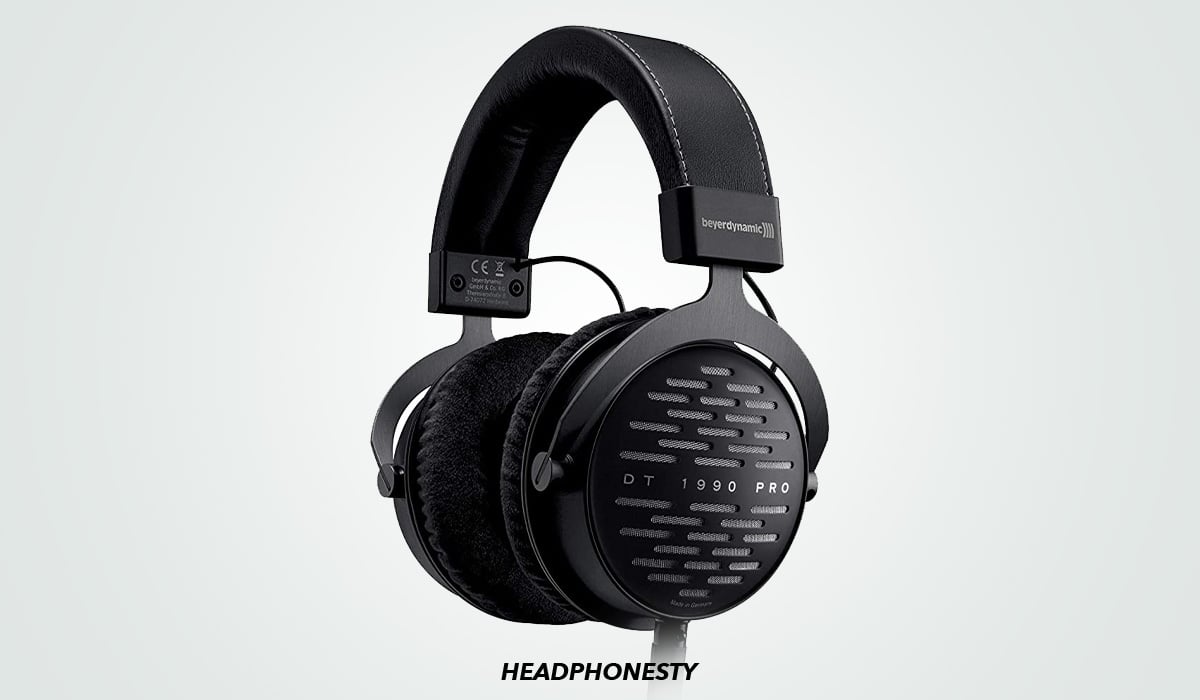
Key features
- Type: Open-back
- Connectivity: Wired (Detachable Cables)
- Padding: Velour + Memory Foam
- Weight: 364g
- Adjustability: Headband height adjustment, tilting ear cup
- Other Features: Wide stereo image and three-dimensional sound reproduction
If you’re on a budget, the Beyerdynamic DT 990 Pro is a decent pick that won’t hurt your ears and your pocket. Beyerdynamic’s DT 990 Pro have been around since 1985 and is continuing to sell up until today. That’s because they rival even the latest headphones from other brands in terms of comfort and sound quality.
The Beyerdynamic DT 990 Pro are open-back headphones that are noticeably well-ventilated to prevent moisture build-up. The inch-thick memory foam paddings make these headphones feel comfortably dense while the velour coating provides a soft and plushy finish. These have to be the biggest reasons why they are as great on the ears as they are pegged to be.
Much like the Sennheiser HD 599, these headphones were made for long hours in the studio. They feature a wide stereo image plus three-dimensional sound reproduction. Together, these two features produce high fidelity sound for the headphones.
Unfortunately, they are quite heavy at 364g — the heaviest on this list. Also, their adjustability is only limited to the adjustable spring steel headband and ear cups that allow only about 30-45 degrees of tilt.
MEZE 99 Classics
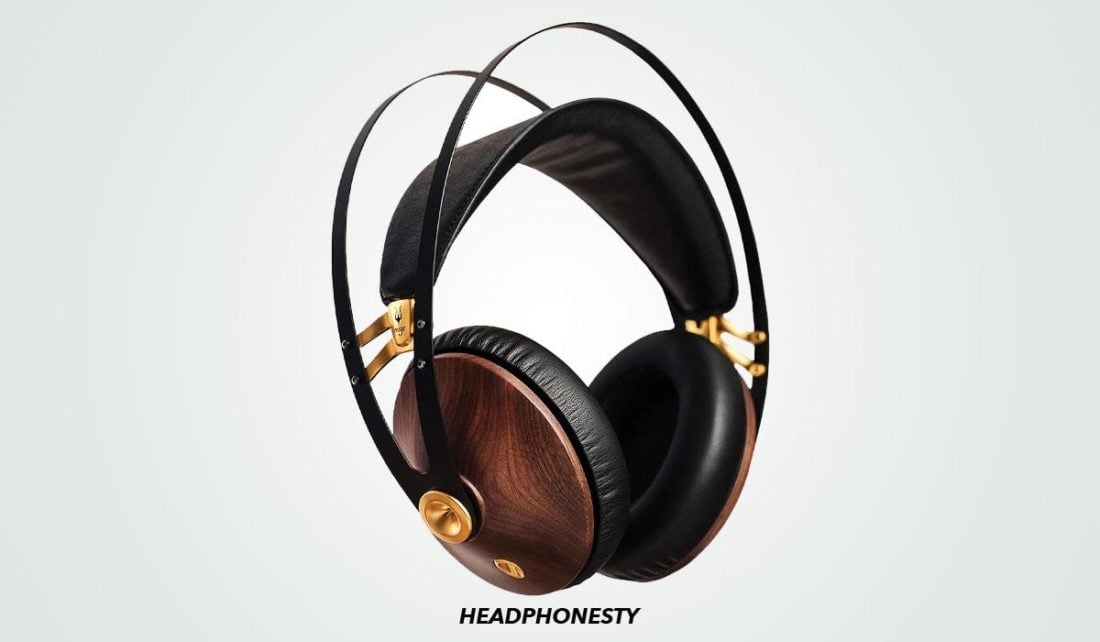
Key features
- Type: Closed-back
- Connectivity: Wired
- Padding: Memory foam with soft PU leather
- Weight: 260g
- Adjustability: Self-adjusting headband
- Other Features: Wooden Ear cups, Zero Plastic, Fully Serviceable
At 260g, the Meze 99 Classics are the lightest wired option in this list. The secret to that is their wooden design that emphasizes style and comfort at the same time. If you want something that will turn heads and not hurt yours, these should definitely be on your list.
The wooden ear cups are made out of walnut wood which is known for its toughness. The ear cups also provide good sound isolation while also taking advantage of the wood’s natural breathability. With this and their manganese spring steel headband, the Meze 99 Classics are not just lightweight but very durable as well.
Their self-adjusting headband is also a unique feature that evens out pressure whatever your head size is. Furthermore, the headphones are fully serviceable which means every part can be replaced since no glue was used in making them. This unique build is also one of the reasons behind their weight.
However, the headphones feature medium density memory foam pads finished with PU leather. Although stylish and comfortable, the combination of these two materials might lead to ear fatigue when used for long hours.
Philips SHP9600
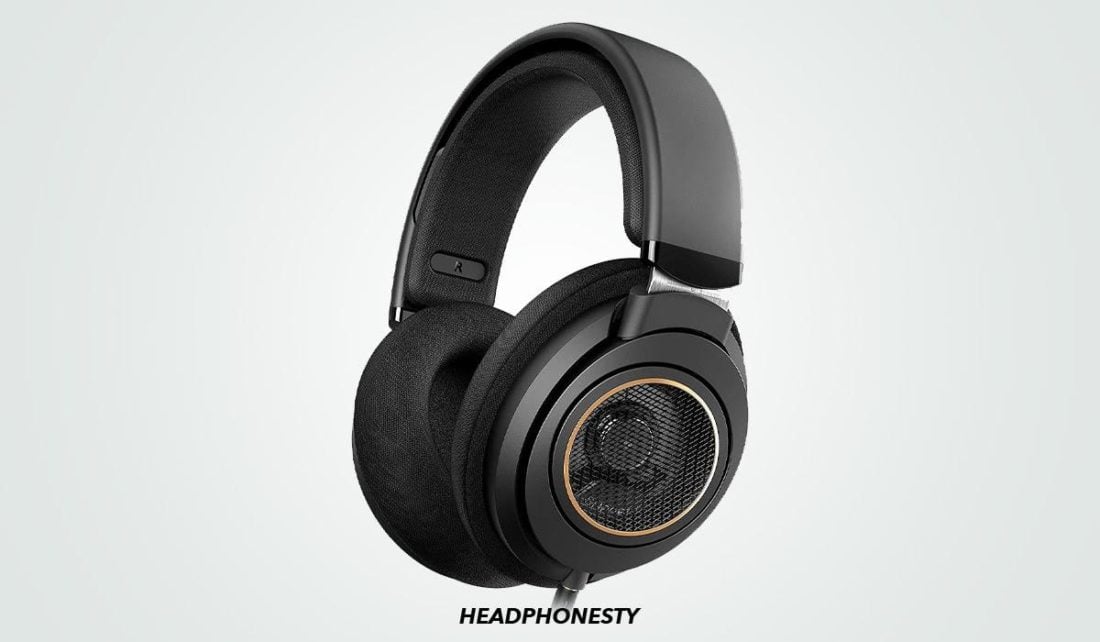
Key features
- Type: Open-back
- Connectivity: Wired
- Padding: Fabric
- Weight: 330g
- Adjustability: Headband height adjustment
- Other Features: Detachable 3.0m cable, Made out of reinforced durable steel
Even people with big heads deserve to be comfortable while wearing headphones. If you’re one of those people who just can’t seem to find big enough headphones, then the Philips SHP9600’s large frame and oversized ear cups could help you out.
These high-performance wired headphones feature a double-layered headband cushion and breathable ear cups. The paddings are finished with a fabric cover that is both breathable and absorbent. Also, their open-back design allows for more ventilation to prevent moisture build-up.
The headband is made out of reinforced durable steel which makes it one of the most durable options on this list. Because of this, the headphones’ headband can also be elongated without getting flimsy even when the adjustment is maxed out.
Unfortunately, the ear cups do not have any form of adjustment. This is one of the reasons why people who have average to small heads struggle to find a comfortable setting. The 330g weight is also the second heaviest in this list.
AKG K712 Pro
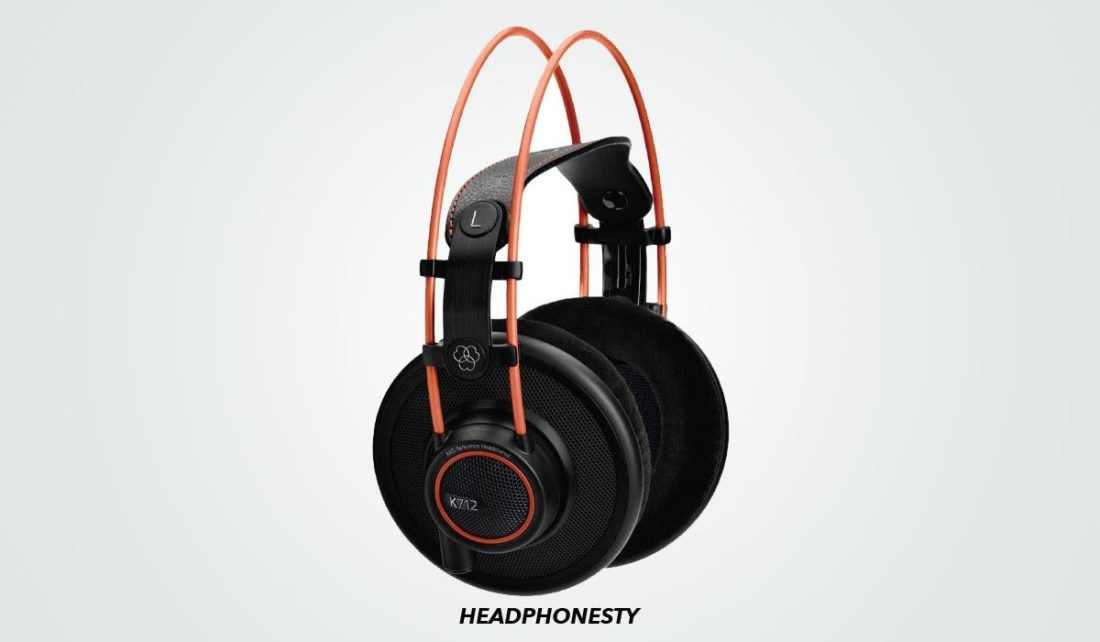
Key features
- Type: Open-back
- Connectivity: Wired
- Padding: Velour Ear pads and Genuine Soft Leather Headband
- Weight: 294.8g
- Adjustability: Headband height adjustment
- Other Features: Improved low-end performance by 3dB, Flat wire coil
The AKG K712 Pro are notorious for being labelled as the best headphones for those with big ears — and for good reason. The large and circumaural ear cups provide that much-needed space while their open-back design also contributes to their breathability.
Moreover, their ear cup paddings are made out of soft velour pads while the adjustable headband is genuine soft leather. Though not that thick, the earpads are one of the reasons why they’re here on this list. They also weigh decently at 294.8g.
Being studio headphones, the AKG K712 Pro prioritize sound quality and fidelity over other day-to-day functions. They improved low-end performance by 3dB which improves sound imaging. They also have AKG’s revolutionary flat wire coil that makes impulses and trembles more responsive and accurate.
The absence of any form of padding on the headband causes the weight to be a little uneven but the leather support is comfortable nonetheless. Moreover, the headphones are mostly made out of plastic and the build quality leaves a lot to be desired — especially for their price.
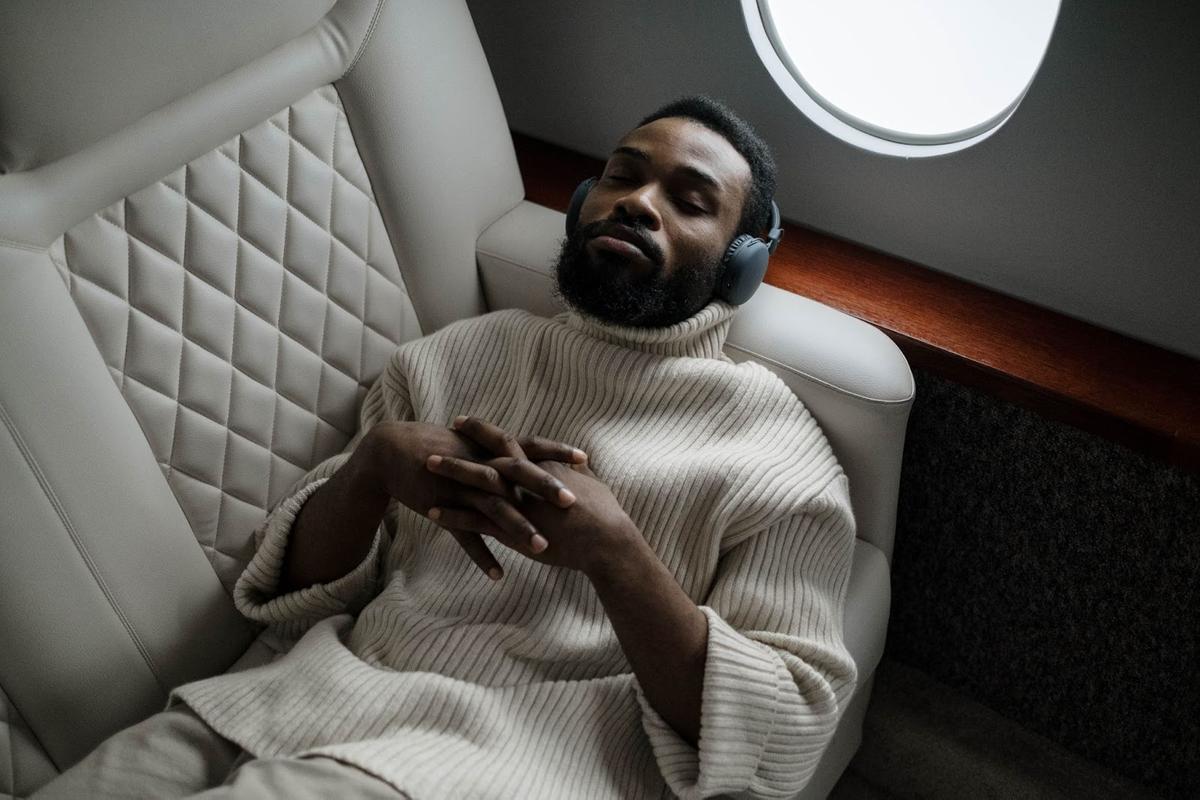
Hi,
DcA Aeon.
And above all, Audioquest Nightowl.
BR